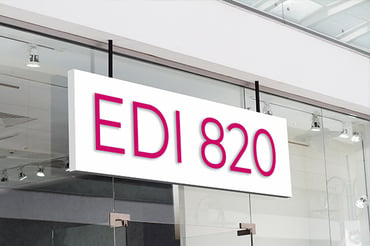What is the EDI 820?
Often called the Payment or Order Remittance Advice and sometimes simply The Remittance Advice, the EDI 820 is sent by retailers to suppliers. Essentially, it informs the supplier that the invoice has been received and will be paid. When a retailer receives an invoice—the EDI 810—they follow up with the EDI 820. Which is nice, of course, because it means money is heading your way.
What information will I receive in the EDI 820?
It typically includes the invoice number or numbers, adjustments made to the invoice, payer and payee information, bank account information and the billed versus paid amounts.

The EDI 820 can also be a direct deposit tool—retailers can use it to authorize financial institutions to transfer funds electronically.
This document can introduce an added layer of complexity because it is not always simple communication from a retailer to a supplier. Sometimes, if it's appropriate and an approved part of the payment process, banks and banking information may be included in the EDI 820.
How does the EDI 820 help my business?
The EDI 820 helps with reconciliation—the details it provides can be used to keep your accounting accurate. If you’re managing cash flow, it offers an added degree of confidence and control. After all, it’s always nice to know when money will make its way to you.
Does every retailer send an EDI 820?
Not all retailers will send an EDI 820—many do not. It will vary according to the EDI protocols of your trading partners. That’s why it’s important to have an EDI software provider that knows the different and often changing requirements of retailers.
Want to learn more about other EDI documents? Here's a guide.





